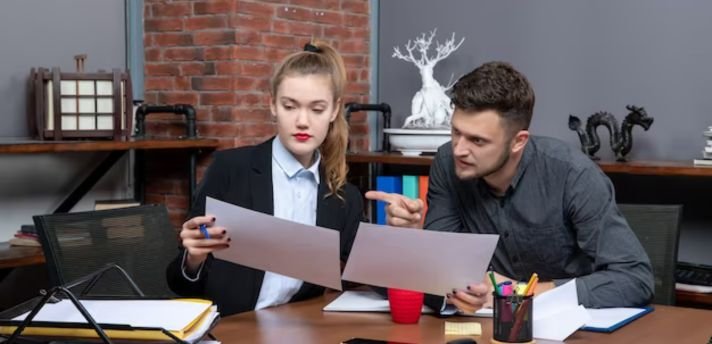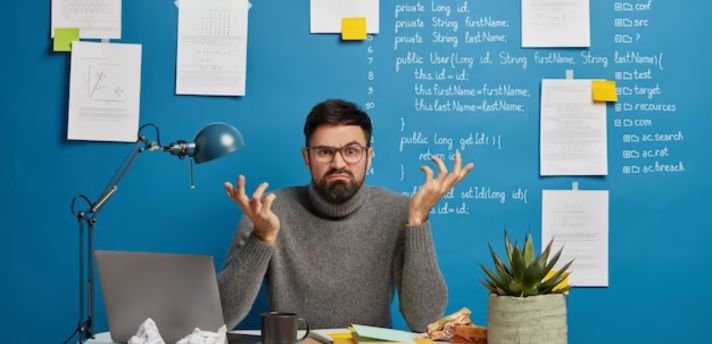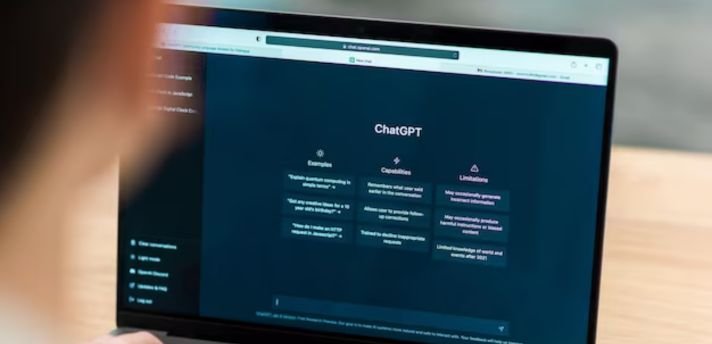Plagiarism vs Copyright: Key Differences & How to Avoid Infringement
09/21/2023 5:15 PM
by Admin
in Seo tactics
What's the Difference Between Copyright and Plagiarism? Everything You Need to Know

Copyright and plagiarism are two concepts that are often confused with one another. While there is some overlap between copyright infringement and plagiarism, they are distinct legal and ethical issues.
Understanding the key differences is important for content creators, researchers, students, and anyone producing written, artistic, or digital media.
In this comprehensive guide, we’ll cover:
- Definitions of copyright and plagiarism
- Key similarities between copyright and plagiarism
- The important differences between the two
- Examples of plagiarism versus copyright infringement
- How to avoid plagiarism and copyright violations
- FAQs about plagiarism and copyright
By the end, you’ll have a clear understanding of what constitutes plagiarism, what kinds of content are protected by copyright, and how to steer clear of both in your own work.
What Is Copyright?

Copyright is a form of legal protection granted to the authors and creators of original works, including:
- Books, articles, and other written works
- Music, lyrics, and recordings
- Visual art, photography, and digital designs
- Films, television, and choreography
- Computer software and code
Under copyright law, the creator of an original work has certain exclusive rights, including the rights to:
- Reproduce the work
- Distribute copies of the work
- Display or perform the work publicly
- Make derivative works
Copyright protects the original expression of ideas, not the ideas themselves. It comes into effect automatically as soon as a work is created in a fixed form, though registration provides additional benefits.
In the US, copyright lasts for the life of the creator plus 70 years. This protects the creator's rights and provides income for their heirs and estate after they pass away. Unauthorized use of a copyrighted work is considered copyright infringement and carries legal penalties.
What Is Plagiarism?

Plagiarism is presenting someone else's words, ideas, or other creative work as your own without proper citation. Unlike copyright infringement, plagiarism is an ethical offense rather than a legal one. There are various forms of plagiarism including:
- Direct plagiarism - Copying verbatim text, word-for-word, without attribution
- Mosaic plagiarism - Borrowing ideas and phrases without thoroughly paraphrasing
- Accidental plagiarism - Forgetting to cite sources even when not intentionally copying
- Self-plagiarism - Reusing substantial unattributed portions of one's own prior work
Plagiarism violates academic integrity policies and journalistic standards. While not prohibited by law, plagiarism can still have serious consequences like failing grades, loss of credibility, and damage to reputation.
Similarities Between Copyright and Plagiarism
Copyright and plagiarism have some overlap in that they both involve the unauthorized use of other people's creative work. The similarities include:
- They involve failing to properly credit the creator or rights holder of original content.
- They can be applied to written works, visual art, music, video, digital media, and more.
- They can result in loss of profits and reputational harm for the original creator.
- Certain verbatim uses without permission may potentially infringe on copyrights and constitute plagiarism.
However, there are also very important differences between the two concepts. Understanding the distinctions is key.
Key Differences Between Copyright Infringement and Plagiarism
While copyright and plagiarism may seem related, they differ significantly in these respects:
Legal Status
- Copyright is established in federal law with civil and criminal penalties. Infringement can result in statutory damages.
- Plagiarism has no legal status. It's an ethical violation that can damage reputation but is not typically prosecuted as a crime on its own.
Scope of Protection
- Copyright protects specific original works of authorship in fixed form. It does not protect ideas, facts, or processes.
- Plagiarism encompasses the unattributed use of ideas, facts, and writing. It includes failing to cite sources even when not copying verbatim.
Level of Copying Required
- Copyright infringement requires substantial copying of original elements of a work. Infringement is based on either quantitative copy volume or qualitative importance of what was copied.
- Plagiarism can involve even small amounts of copying. Attributing a single sentence verbatim can avoid plagiarism. Standards of citation and attribution are often broader.
Explicit Permission
- Copyright rights exist from the moment of creation. Explicit permission is always required for use by others, with few exceptions like fair use.
- Plagiarism is not using prior work 'responsibly', but permission is not always mandatory. Fair use, paraphrasing, and proper citation generally avoid plagiarism.
Enforcement Authority
- Copyright is enforced through legal channels like lawsuits and cease-and-desist orders. Rights holders can claim damages.
- Plagiarism consequences are determined locally by schools or publishers. Punishment aims to correct behavior, not compensate rights holders.
As this breakdown indicates, plagiarism and copyright infringement shouldn't be equated even though they both involve the unauthorized use of others' work. Let's look at some examples to illustrate the differences further.
Examples of Plagiarism vs. Copyright Infringement

Consider these scenarios to see how plagiarism and copyright infringement operate differently:
- Reproducing a designer handbag using the exact same materials, prints, and approach without permission would violate the copyright of that fashion product. Selling the replicas could lead to infringement claims. But it wouldn't constitute plagiarism since products aren't written works.
- A student turning in an essay containing full unattributed paragraphs copied verbatim from website articles would be committing plagiarism. But they likely wouldn't have infringed copyrights unless the volume copied passed the substantial similarity threshold for infringement.
- A news site that repeatedly excerpts long passages of text from a competitor site without adding commentary could potentially trigger copyright infringement. However, excerpting smaller portions while providing proper attribution avoids plagiarism.
- A musician who samples a melody from a copyrighted song without permission is infringing on the musical composition copyright. But that unauthorized use wouldn't be classified as plagiarism.
- A historian writing a book on the Civil War who presents key facts and dates without citing sources has committed plagiarism by not attributing material but hasn't infringed historical facts' copyright since those aren't protected by copyright.
These examples demonstrate how the nature and scope of plagiarism and copyright violations differ substantially. Understanding these distinctions is critical in avoiding both ethical and legal pitfalls in content creation and research.
How to Avoid Plagiarism
Plagiarism can often be avoided by taking these steps:
- Enclose any verbatim quoted text in quotation marks and cite the source. Quotes over a certain length may still require permission to avoid copyright issues.
- Thoroughly paraphrase and summarize ideas using your own words and sentence structure. Change key verbs, swap synonyms, and alter the overall phrasing.
- Indicate in citations when you are presenting information, concepts, or opinions originally expressed by others, even if paraphrasing or summarizing.
- Cite sources for all statistics, data points, diagrams, charts, and other factual information that is not common knowledge. Provide footnotes and bibliographies.
- Avoid excessive reliance on any one source. Use a variety of sources to substantiate key points.
- Clearly indicate in citations any unique or distinctive concepts and turns of phrases borrowed from another source.
- When reusing portions of your own prior published work, quote and cite yourself similarly to other sources. Alternatively, rewrite completely to avoid self-plagiarism concerns.
Adhering to ethical citation practices appropriate to your field is the best way to steer clear of plagiarism pitfalls while still benefiting from prior work on your topic.
Avoiding Copyright Infringement
To avoid infringing on copyright, take these steps:
- Obtain explicit licenses or written permissions from rights holders before reproducing, distributing, displaying, or modifying copyrighted works. Pay any required fees. Rights may be held by publishers rather than authors.
- Take advantage of copyright exceptions like fair use only on a limited scale after carefully applying the fair use balancing test. Relying too heavily on unlicensed third-party material creates infringement risk.
- When adapting works into new derivative forms, ensure the underlying structure, sequence, and other original expressive elements are transformed significantly rather than copied closely. Substantial similarity suggests infringement.
- Note that short excerpts may still require permission. Copyright protects specific turns of phrase and prose structure, not just overall themes and concepts.
- Remember that plagiarism citations like quoting snippets in an academic paper may not suffice for copyright purposes if total verbatim usage is substantial without permission.
Exercising creativity in how you use, remix, and build upon existing works will keep your original output protected while respecting rights holders. Referencing sources helps avoid plagiarism, but copyright clearances may still be required even when properly citing.
FAQs:
Q: Is all plagiarism a copyright violation?
A: No, plagiarism and copyright infringement are distinct. Plagiarism encompasses unattributed facts and ideas which don't fall under copyright. Small amounts of copied text may qualify as plagiarism but be too little to infringe a copyright.
Q: Does properly citing sources mean I can use as much of a work as needed without copyright issues?
A: No, proper citation avoids plagiarism but doesn't supersede copyright law. Permission is still required for substantial reuses of copyrighted material. Fair use may apply, but it is limited.
Q: If I change some words in a sentence or paragraph have I avoided plagiarism and copyright violation?
A: Not necessarily. Minor word changes likely still qualify as plagiarism and may infringe on the original phrasing arrangement protected by copyrights. To avoid both, thoroughly paraphrase and cite sources.
Q: Can I use facts and ideas from journal articles freely without permission or citation?
A: While facts aren't covered by copyright, using them without attribution still risks plagiarism allegations. Cite sources even when paraphrasing and summarizing to uphold academic integrity.
Q: Does plagiarism only apply to academic writing contexts?
A: No. Plagiarism policies extend to journalism, publishing, scientific research, and anywhere presenting original analysis and writing. Any content creator can commit plagiarism with inadequate source attribution.
Q: If I plagiarize can I be sued for copyright infringement?
A: Maybe, but not necessarily. While plagiarism alone isn't grounds for legal action, extensive verbatim copying without attribution could potentially spur infringement claims. The two issues may overlap.
Carefully evaluating your use of existing works for proper citation and copyright compliance will keep you in the clear. Let ethics and legal principles guide your content creation.
Steering Clear of Plagiarism and Infringement
With the widespread availability of content online, interpreting existing works in new contexts poses both creative opportunities and responsibilities. Learn to work ethically and legally using these best practices:
- Cite sources meticulously even when paraphrasing ideas to avoid plagiarism concerns. Copyright-protected phrasing should also be avoided or licensed.
- Transformatively repurposes elements of other works through commentary, critique, and contextualization. Relying too heavily on verbatim reuses increases infringement risk.
- Obtain permissions where required for long quoted passages and to license copyrighted works like photographs, charts, and video clips embedded in your output.
- Become familiar with plagiarism and copyright policies applicable to your field and reference library guides to properly apply citation conventions.
- Consult experienced legal counsel and plagiarism experts if questions arise about infringement or citation expectations in your discipline. It's better to clarify uncertainties than rely on assumptions.
- Purchase plagiarism-checking software to scan drafts and flag possible citation oversights. But realize technology alone can't ensure adherence to ethical principles.
With attentiveness and care, creators can foster new breakthroughs in their disciplines while respecting past innovations. Our shared knowledge grows through cooperation and proper acknowledgment of how each advancement builds on those before it. Use the work of others judiciously and conscientiously to produce your own contributions worthy of the same honor.
Conclusion
While plagiarism and copyright infringement both involve the use of others’ work without permission, they have distinct definitions, standards, and legal statuses. Plagiarism encompasses unattributed ideas and facts while copyright only protects original expressions in fixed form.
Understanding the boundaries between ethical citation and lawful copyright compliance will serve any writer, artist, researcher, or content producer seeking to reference existing works without crossing lines. With the right awareness, you can avoid missteps and focus on sharing your own creative voice and analysis with the world.





